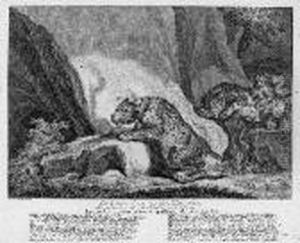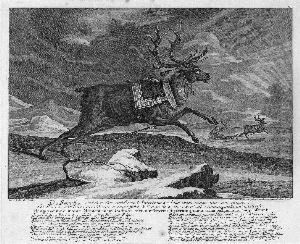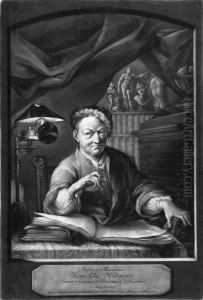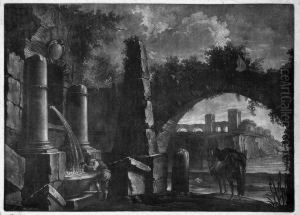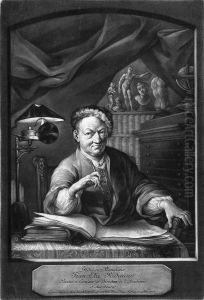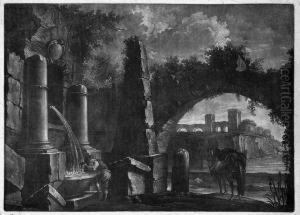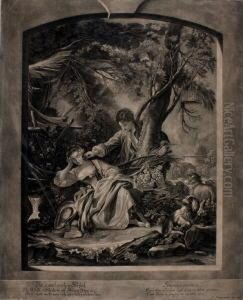Johann Jakob Ridinger Paintings
Johann Jakob Ridinger was a notable German painter, engraver, and publisher, celebrated for his exceptional work in animal, hunting, and equestrian subjects. Born on February 16, 1698, in Ulm, Germany, Ridinger showed an early inclination towards art, which led him to pursue a career that would make him one of the foremost artists of his time in his chosen fields. His detailed and dynamic depictions of wildlife and hunting scenes, often rich in narrative and imbued with a keen observation of nature, have earned him a lasting place in art history.
Ridinger's education in art began under the tutelage of his father, who was a painter and engraver himself. This early exposure to the world of art, combined with his natural talent, set the foundation for Ridinger's future achievements. He further honed his skills in Augsburg, where he studied and later worked. It was during this period that Ridinger's style began to mature, and he started to establish a reputation for his engravings and paintings. His works were not only sought after in Germany but also gained recognition in other parts of Europe, showcasing his growing influence in the art world.
Throughout his career, Ridinger was prolific, creating a vast array of etchings, engravings, and paintings. His technical skill, particularly in the intricate details of his engravings, was matched by his deep understanding of animal anatomy and behavior, making his work both artistically and scientifically valuable. Ridinger was also known for his contributions to the understanding of horse riding and training, publishing a series of works on the subject that were well-regarded for their practical insights and artistic merit.
Ridinger's legacy is preserved in numerous collections and museums across the world, with his works continuing to be admired for their beauty and precision. His influence extended beyond his lifetime, inspiring future generations of artists interested in natural and animal subjects. Johann Jakob Ridinger passed away on April 10, 1767, in Augsburg, leaving behind a body of work that remains a testament to his passion for the natural world and his mastery of the art of engraving and painting.
